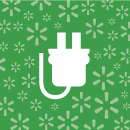The Pacto pela Sustentabilidade (Pact for Sustainability) is based on three pillars – Amazon, Responsible Purchasing and Waste Management – and aims to build a business model driven by sustainable development. As a result, it includes the monitoring and offsetting of risks, the strengthening of partnerships with strategic suppliers and encouraging continuous improvement.
The Pact completed five years in 2014 and Walmart Brasil presented the main results of the initiative in which more than 160 companies from different sectors have participated.
Click here and find out more about the main results of the Pacto pela Sustentabilidade (Pact for Sustainability) and the trends that are likely to drive the sustainability of the industry in the coming years.
Pillars of the Pacto pela Sustentabilidade (Pact for Sustainability)
This covers the life cycle of the product, including its development, productive process, transport, sale and disposal, with the emphasis on aspects of innovation, eco-efficiency and the social and environmental conformity of suppliers.
This covers issues such as the use of packaging and plastic bags, reverse logistics and encouraging recycling.
Work is carried out in the soybean, timber and livestock chain to combat degrading working conditions, direct, encourage and train suppliers for certification, and verify the origin of raw materials, considering the risk that they may be linked to the deforestation of the Amazon biome.
End-to-End Sustainability
This initiative was created within the Pacto pela Sustentabilidade (Pact for Sustainability) , and aims to identify opportunities to reduce social and environmental impacts throughout the whole life cycle of products. To do so, Walmart invites its suppliers to optimize an item in their portfolio. In the five years of the Pact's existence, 29 companies have taken part and launched 41 innovative and socially and environmentally responsible products. This has led to a total reduction in consumption of:






19,883 GWh of energy
745,000 m³
of water
290,000 liters of
fuel/diesel
140,000 of
packaging
1,340 tons
of waste
4,291 tons of CO2 and
Greenhouse Gas Emissions
The initiative was expanded in October 2014 and was managed and run by the Centro de Tecnologia de Embalagem – CETEA (Center for Packaging Technology). This will allow more companies to participate. The focus in 2015 is to seek innovations in packaging.